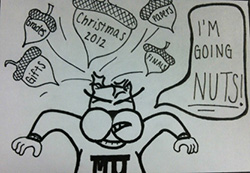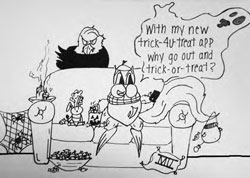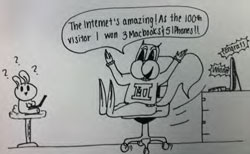What’s a good comic book without super villains? Sure, they are evil and maniacal but they can be just as fascinating. Writers and artists have recognized this with many series and miniseries spotlighting villains like “Nemesis,” “Carnage,” “Suicide Squad,” and “Books of Doom.” However, to keep this column short, when it comes to scum of the Earth, you can’t go wrong with DC and Marvel Comics.
DC Comics has had comics devoted to evildoers like Ra’s Al Ghul and Deadshot as well as a limited series called “Salvation Run” (Here all of Earth’s villains being exiled to a distant planet where character sided with the brilliantly mad Lex Luthor or the insane Joker).
Now, when it comes to two of the more interesting villain stories from DC, they come courtesy of writer Brian Azzarello and artist Lee Bermejo. Together, they have showcased tales that offer a new perspective on Lex and the Joker than what fans are familiar with.
First there was the miniseries, “Lex Luthor: Man of Steel,” which presented an in depth analysis of this criminal mastermind. Yes, fans have understood that Lex’s hatred of Superman stems from the fact that he sees this extraterrestrial as a threat for mankind, preventing humanity’s own success. Though many have and still show this, hearing Lex’s made the tale creepy and present the feeling of being inside his head.
Azzarello and Bermejo’s next project was the dark and richly entertaining Clown Prince of Crime tale, “Joker.” The graphic novel featured a newcomer to the Joker’s gang who gets a firsthand experience of what it means to run with this insane criminal. Throughout the novel, Azzarello and Bermejo present new, realistic takes on classic Batman villain such as the Penguin and Killer Croc much like the Christopher Nolan films. Bermejo’s artwork also gave the characters and setting a rough, gritty feel. What sets this apart from “Lex Luthor: Man of Steel” is how the reader doesn’t hear the Joker’s thoughts or delve further into his mind. They only observe his actions and hearing his words as they transpire to keep the Joker even more mysterious, distant, and terrifying.
In fact, while talking to newsarama.com about “Joker,” Azzarello explained why he chose to keep the Joker’s thoughts silent. “I firmly believe that trying to write from the Joker’s perspective would be taking power away from that character; part of the power of that character is his unpredictability. Nobody knows what he is going to do next; so, if you’re in his head, you totally take away the unpredictable nature of the character,” the writer said.
Now, while DC Comics has a strong number of villains, so does Marvel. Certain characters are plain evil like the Norman Osborn and the Leader while others have a way for readers to understand their point of view like the Lizard and Penance (now Speedball again).
Still, much like the Azzarello/Bermejo collaboration, sometimes the best way to understand a hero is to see where they come from, which is what writer Greg Pak has done in two opposite WWII tales with “Magneto: Testament” and “Red Skull: Incarnate.”
Each one observed the elements that made Magneto (Max Eisenhardt) and the Red Skull (Johan Schmidt) into the men they would later become.
“Magneto: Testament” was a tough, engaging tale to read about a boy and his family who gets sent to a concentration camp and face the most horrific actions of man. Being persecuted for just being himself made Max weary of trusting humanity and thus when he gained his magnetic powers unleashed his anger at man. While others writers and artists have shown Magneto’s past, it was the simple fact that Pak presented this character not just as the boy who would be a super villain but a kid facing an extremely terrifying situation.
Pak presented this miniseries somewhat for continuity as well as to keep history alive. Readers forget who Max will become and instead see what this character does to stay alive in the worst conditions, one people should never forget.
In an interview with impulsecreations.net, Pak explained what made him want to script this series. He said, “…most importantly, I was compelled by the idea of writing about a boy trying to save his family from the Nazi onslaught. The idea that this quiet schoolboy might find within him the strength to overcome his terror and do his best to save his family totally compelled me.”
Next, “Red Skull: Incarnate,” explored the childhood of Johann and how he ended up with the Nazis. As with “Magneto: Testament,” the reader never sees the character become their future villainous self but rather the road they take that leads to this dark path. “Red Skull: Incarnate” also explored the rise of the Nazis and the persecution of other government parties and minorities.
Throughout the series, the reader never has much sympathy for Johann and instead observes what he does through illegal actions and betrayals to become Hitler’s right hand officer. Although making a series about the Red Skull’s past is tough, Pak wrote in an afterword in issue #1 how one thought that drove this series was how “…we also need to struggle with the question of how everyday people can so willingly embrace evil?”
Villains will always be a constant threat for superheroes and when it comes to understanding where these bad guys, it can make these character even more despicable.




